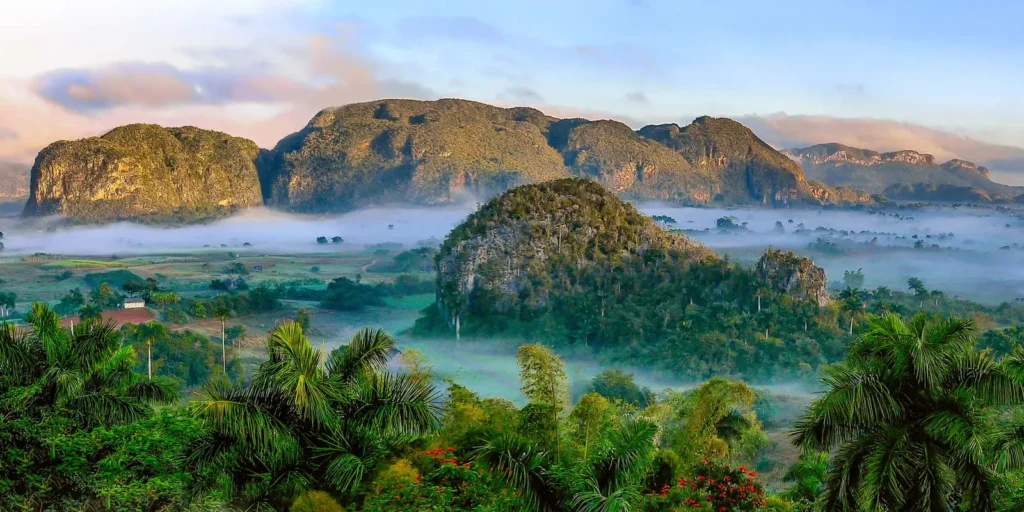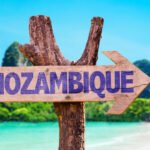Discover Cuba: A Land of Rich History and Culture
Introduction:
Cuba, officially known as the Republic of Cuba, is the largest island in the Caribbean and a country with a rich and turbulent history. Located where the Caribbean Sea, Gulf of Mexico, and Atlantic Ocean meet, it is bordered to the north by the United States and the Bahamas, to the west by Mexico, to the south by the Cayman Islands and Jamaica, and to the southeast by Haiti. The capital city is Havana, a vibrant cultural hub and historical treasure.
Cuba’s geography is characterized by rolling plains, rugged mountains, and an extensive coastline with beautiful beaches. The climate is tropical, moderated by trade winds, and the country experiences a wet season from May to October.
Economically, Cuba is unique due to its socialist system, established after the Cuban Revolution in 1959. The government controls most of the economy, which is heavily reliant on tourism, sugar, tobacco, and pharmaceuticals. Despite economic challenges, Cuba has a high human development index, particularly in healthcare and education.
Culturally, Cuba is renowned for its music, dance, and art, heavily influenced by African, Spanish, and indigenous Taino traditions. Cuban music, particularly genres like salsa, mambo, and son, has gained international fame. The country’s history, from colonial times to the revolution led by Fidel Castro and Che Guevara, has shaped its current identity.
Politically, Cuba is a one-party state governed by the Communist Party of Cuba. The government has been led by the Castro family for most of the post-revolution period, with Raul Castro succeeding his brother Fidel in 2008, and Miguel Díaz-Canel becoming president in 2018.
Tourism in Cuba is a major industry, drawing visitors to its historic cities, pristine beaches, and lively culture. Key attractions include Old Havana, Varadero Beach, and the colonial town of Trinidad.
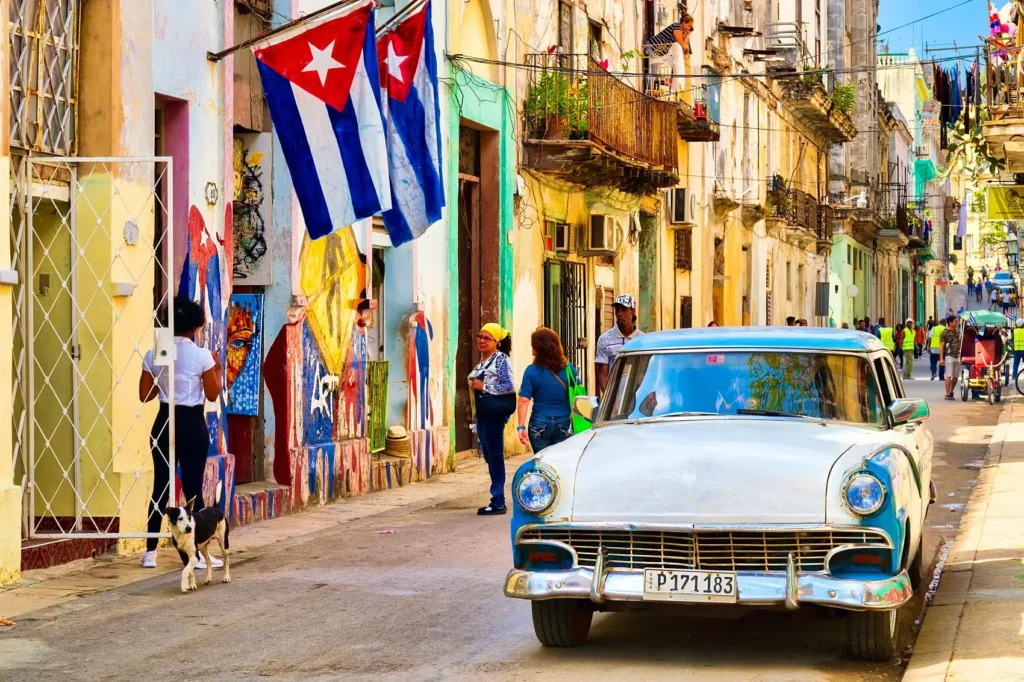
110 Facts About Cuba (2024)
Basic Information
| Category | Details |
|---|---|
| 1. Current Name | Cuba |
| 2. National Name | República de Cuba |
| 3. Former Names | None |
| 4. Date of Establishment | May 20, 1902 |
| 5. Date of Independence | January 1, 1959 (from the Batista regime) |
| 6. Leadership | President: Miguel Díaz-Canel |
| 7. Government Type | One-party socialist republic |
Geography
| Category | Details |
|---|---|
| 8. Capital City | Havana |
| 9. Important Cities | Santiago de Cuba, Camagüey, Holguín |
| 10. Land Area | 109,884 square kilometers |
| 11. Total Area | 109,884 square kilometers |
| 12. Neighboring Countries (Land) | None |
| 13. Neighboring Countries (Sea) | United States, Bahamas, Mexico, Cayman Islands, Jamaica, Haiti |
| 14. UNESCO World Heritage Sites | Old Havana, Trinidad, Viñales Valley (9 sites) |
| 15. UNESCO World Natural Sites | Desembarco del Granma National Park, Alejandro de Humboldt National Park |
| 16. Climate | Tropical, moderated by trade winds |
| 17. Biodiversity | Rich in flora and fauna, including the Cuban crocodile |
| 18. Famous River | Cauto River |
| 19. Famous Mountain | Sierra Maestra |
| 20. Coastline Length | 5,746 kilometers |
| 21. Major Islands | Isla de la Juventud |
| 22. Longest River | Cauto River |
| 23. Highest Waterfall | Salto del Guayabo |
| 24. Largest Lake | Laguna de Leche |
| 25. Largest Forest | Alejandro de Humboldt National Park |
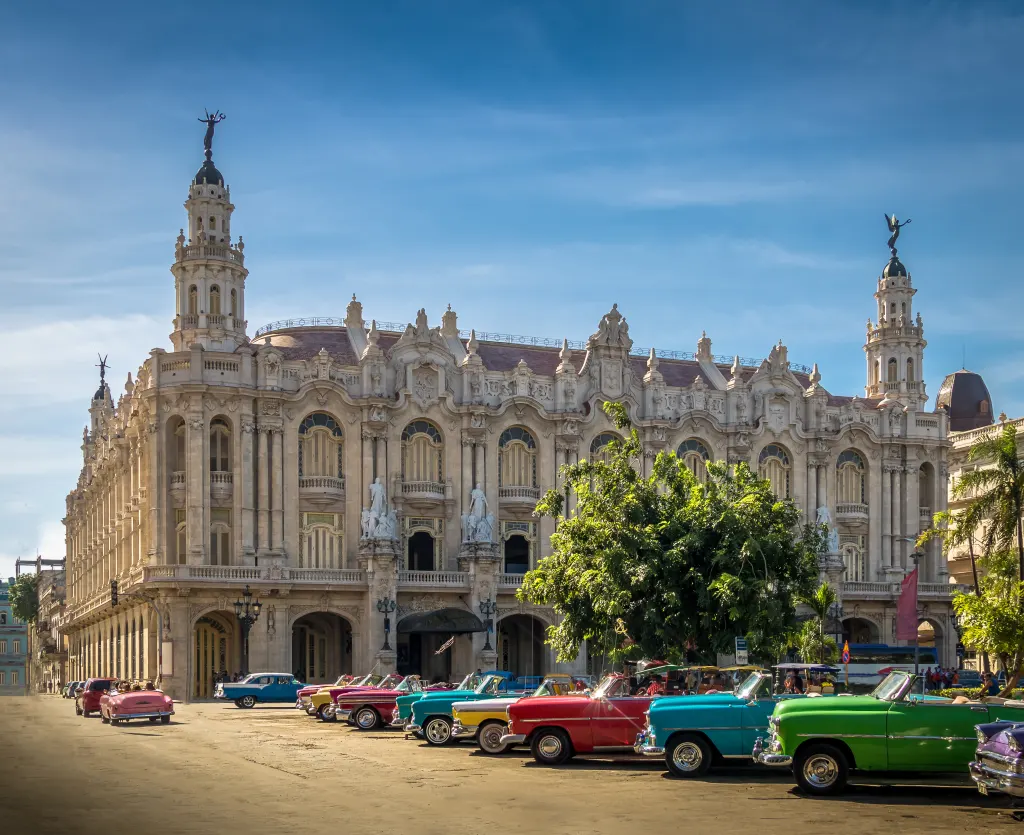
Population
| Category | Details |
|---|---|
| 26. Population (2024) | Approximately 11 million |
| 27. Population (1950) | 5.9 million |
| 28. Population (1900) | 2.1 million |
| 29. Projected Population (2070) | 9 million |
| 30. Population Density | 100 people per square kilometer |
| 31. Urban Population (%) | 77% |
| 32. Rural Population (%) | 23% |
Demographics
| Category | Details |
|---|---|
| 33. Ethnicity/Race | White (64%), Mulatto (26%), Black (9%), Asian (1%) |
| 34. Languages | Spanish (official) |
| 35. National Language | Spanish |
| 36. Religion | Christianity (predominantly Roman Catholic), Santería |
| 37. Median Age | 42 years |
| 38. Life Expectancy | 79 years |
| 39. Birth Rate | 10.4 births per 1,000 people |
| 40. Death Rate | 9.7 deaths per 1,000 people |
Economic Indicators
| Category | Details |
|---|---|
| 41. Monetary Unit | Cuban Peso (CUP), Convertible Peso (CUC) |
| 42. GDP | $103 billion (2022 est.) |
| 43. GDP per Capita (PPP) | $8,822 (2022 est.) |
| 44. Income Level | Upper-middle income |
| 45. Consumer Price Inflation | 5.7% (2022 est.) |
| 46. Current Account Balance | -$2.1 billion (2022 est.) |
| 47. Exchange Rate (Per $) | 1 USD = 24 CUP |
| 48. Unemployment Rate | 2.6% (2022 est.) |
| 49. Stocks Inward ($ billion) | 4.3 (2022 est.) |
| 50. Real GDP Growth (%) | 1.5% (2022 est.) |
| 51. Labor Force (Million) | 5 million |
| 52. Major Industries | Tourism, tobacco, sugar, pharmaceuticals, nickel mining |
| 53. Major Exports | Sugar, tobacco, nickel, pharmaceuticals, fish |
| 54. Major Imports | Food, fuel, machinery, chemicals |
| 55. Public Debt (% of GDP) | 35% (2022 est.) |
| 56. Tax Revenue (% of GDP) | 22% (2022 est.) |
| 57. Minimum Wage | 400 CUP per month |
| 58. Average Household Income | 1,000 CUP per month |
| 59. Inflation Rate | 5.7% (2022) |
| 60. Interest Rate | 2.5% (2022) |
| 61. Major Trade Partners | Venezuela, China, Spain, Canada, Netherlands |
Social Indicators
| Category | Details |
|---|---|
| 62. Literacy Rate | 99.8% |
| 63. Fertility Rate | 1.6 children per woman |
| 64. Infant Mortality Rate | 4.1 per 1,000 live births |
| 65. Under-5 Mortality Rate | 5.5 per 1,000 live births |
| 66. National Holidays | Liberation Day, Revolution Day, Independence Day |
| 67. Health Care System | Universal healthcare system |
| 68. Health Expenditure (% of GDP) | 10% (2022 est.) |
| 69. Obesity Rate | 24% of adults |
| 70. Drinking Water Source | 98% of the population has access to clean drinking water |
| 71. Access to Sanitation | 95% of the population has access to improved sanitation facilities |
| 72. Average Life Satisfaction | 6.7/10 |
| 73. Major Health Issues | Cardiovascular diseases, diabetes, respiratory infections |
Culture and Society
| Category | Details |
|---|---|
| 74. National Sport | Baseball |
| 75. National Animal | Cuban Trogon (Tocororo) |
| 76. National Flower | White Mariposa |
| 77. Famous Cuisine | Ropa Vieja, Arroz con Pollo, Tostones |
| 78. Famous Music | Son, Salsa, Rumba |
| 79. Major Festivals | Havana Carnival, Santiago de Cuba Carnival |
| 80. Traditional Dance | Salsa, Danzón |
| 81. Famous Artists | Wifredo Lam, Amelia Peláez |
| 82. Famous Writers | José Martí, Alejo Carpentier, Reinaldo Arenas |
| 83. Cultural Influences | African, Spanish, Indigenous |
| 84. Popular Sports | Boxing, Track and Field |
| 85. Religious Practices | Santería, Christianity |
Education
| Category | Details |
|---|---|
| 86. Best Public University | University of Havana |
| 87. Education Expenditure (% of GDP) | 13% (2022 est.) |
| 88. Literacy Rate | 99.8% |
| 89. Primary School Enrollment | 98% |
| 90. Secondary School Enrollment | 96% |
| 91. Higher Education Enrollment | 60% |
| 92. Major Fields of Study | Medicine, Engineering, Social Sciences |
| 93. Number of Universities | 50 |
| 94. International Students | 20,000 |
| 95. Graduation Rate | 80% (high school) |
Environment
| Category | Details |
|---|---|
| 96. Pollution Levels | Moderate, with urban areas experiencing higher levels |
| 97. Forest Coverage | 31% of total land area |
| 98. Protected Areas | 27 national parks |
| 99. Renewable Energy Use | 5% of total energy consumption (2022) |
| 100. Endangered Species | Cuban Crocodile, Ivory-Billed Woodpecker |
| 101. National Parks | Desembarco del Granma, Alejandro de Humboldt, Viñales |
| 102. Environmental Policies | Strong focus on conservation and sustainable agriculture |
International Standing
| Category | Details |
|---|---|
| 103. Military Strength | Moderate |
| 104. Country Rank | 70th in Human Development Index (2022) |
| 105. Happiness Rank | 74th (World Happiness Report, 2022) |
| 106. Passport Rank | 79th (Henley Passport Index, 2022) |
| 107. Tourism Rank | 51st (UNWTO Tourism Ranking, 2019) |
| 108. Global Economy Rank | 66th (World Bank, 2022) |
| 109. Science and Technology Rank | 81st (Global Innovation Index, 2021) |
| 110. Space Program | Developing |
History of Cuba
Cuba’s history is deeply intertwined with colonialism, revolution, and cultural evolution. Originally inhabited by the Taíno and Ciboney peoples, the island was claimed by Christopher Columbus for Spain in 1492. Over the next several centuries, Cuba became a significant Spanish colony, its economy driven by sugarcane, tobacco, and the labor of enslaved Africans.
The 19th century saw the rise of independence movements, culminating in the Spanish-American War in 1898. Following the war, Spain relinquished control of Cuba, and the island became a U.S. protectorate until it gained formal independence in 1902. However, U.S. influence remained strong, leading to periods of political instability and economic control by American interests.
In 1959, Fidel Castro led a successful revolution against the authoritarian regime of Fulgencio Batista, establishing a socialist state. This transformation aligned Cuba with the Soviet Union during the Cold War, resulting in decades of tension with the United States, including the infamous Bay of Pigs invasion in 1961 and the Cuban Missile Crisis in 1962.
Post-revolution Cuba saw significant changes, including the nationalization of industries, land reforms, and the establishment of a one-party state under the Communist Party. While the revolution brought improvements in education and healthcare, it also led to economic challenges, especially following the collapse of the Soviet Union in 1991.
In recent years, Cuba has slowly introduced economic reforms, allowing more private enterprise and foreign investment. Despite ongoing economic difficulties and political repression, Cuba remains a nation of cultural richness and resilience.
The Flag of Cuba
The flag of Cuba, known as the “Estrella Solitaria” (Lone Star), was designed in 1849 by Narciso López, an advocate for Cuban independence. It was adopted officially in 1902 when Cuba gained formal independence from the United States.
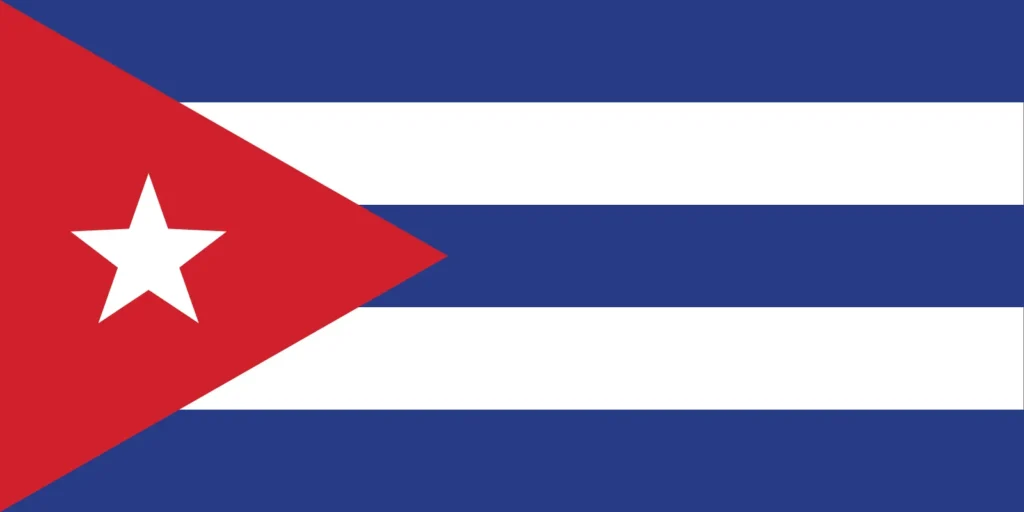
The flag features five horizontal stripes, alternating blue and white. The blue stripes represent the three original provinces of Cuba: Western, Central, and Eastern. The white stripes symbolize the purity and justice of the Cuban people’s cause. On the hoist side, a red equilateral triangle contains a white five-pointed star. The triangle stands for the bloodshed in the fight for freedom, equality, and fraternity, while the star represents the independence and freedom of the Cuban people.
This flag, with its symbolic design, reflects the nation’s struggles and aspirations for independence and justice, and it is a powerful emblem of Cuban identity and pride.
References
- “Cuba.” Encyclopædia Britannica. [britannica.com](https://www.britannica.com/place
